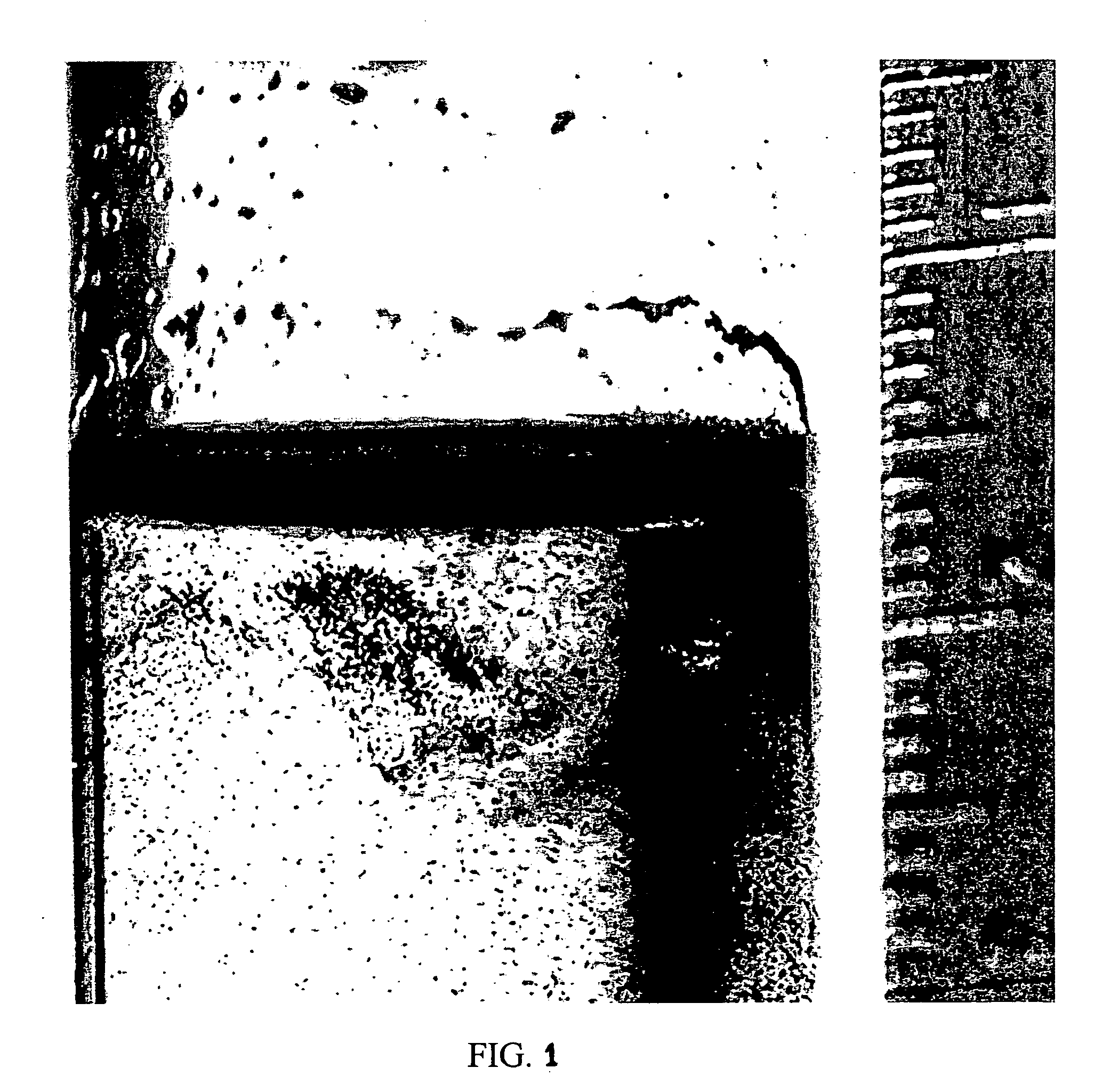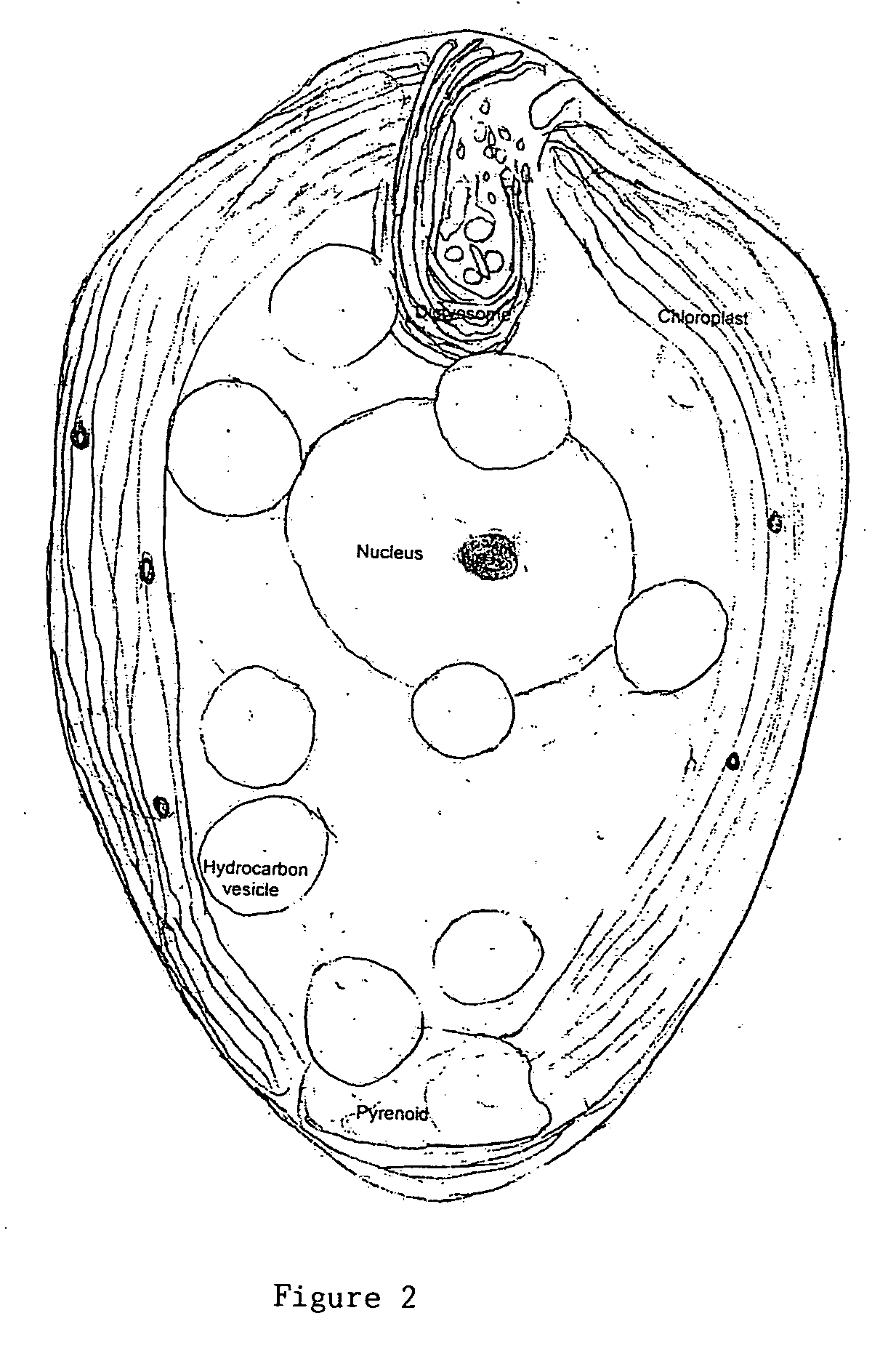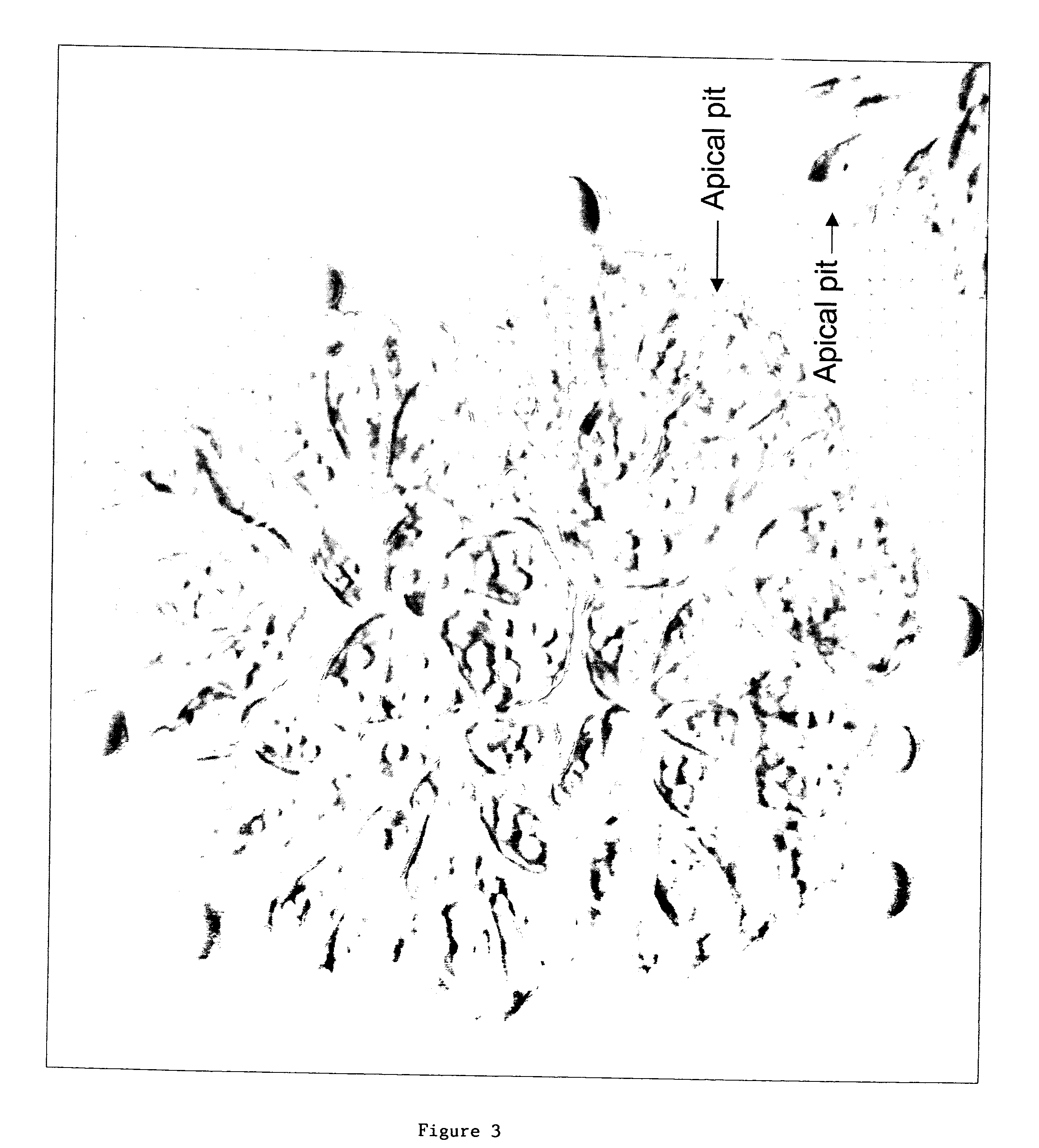Methods and compositions for growth of hydrocarbons in Botryococcus sp
a technology of botryococcus and hydrocarbons, applied in the field of methods and compositions for the growth of hydrocarbons in botryococcus sp, can solve the problem that the cost of a gallon of renewable transportation fuel exceeds the sales price of fossil fuels
- Summary
- Abstract
- Description
- Claims
- Application Information
AI Technical Summary
Benefits of technology
Problems solved by technology
Method used
Image
Examples
example 1
[0039] Hydrological shear forces are greatest at the air:water interface. When the liquid cultures of Botryococcus sp. in ZiP were placed in a shaker table (>100 rpm) cloaked in 3% carbon dioxide, oil was pressed out of the colonies by shearing forces. When brought to a stand still, the oil floated at the surface to be harvested by skimming.
[0040] In healthy sunlit water-borne cultures, colonies rose off the bottom to various levels up to the top half of the column in ZiP cultures supplemented with 36 ppm to 50 ppm Zn+2, 120 mM phosphate and KwiK components at about pH 7. All control colonies in conventional phycological media dropped below the bottom half of the culture tube within an hour. After residing in the dark for 12 hours, colonies in ZiP remained floating at the meniscus, while, in contrast, the colonies of control cultures remained sunken at the bottom of the culture vessels. Starting from colonies maintained for a week in KwiK, the time to flotation of the population wa...
example 2
[0041] The process system of the present invention is schematically depicted in FIG. 4, wherein the mud niche is mimicked by provision of a continuously moistened solid medium such as a fabric beltway that is sufficiently tight in its weave to prevent the colonies from slipping through. For example, 25 to 50 micron Nitex® Broadcloth is an appropriate selection. Nitex® Broadcloth 10 microns to 600 microns is the material of choice for plankton nets. The fabric belt is inoculated with Botryococcus spp. and growth is maintained by continuous misting with carbon dioxide gas-supplemented KwiK and natural solar illumination. Initially, gas-carbonation assists by sustaining acidity that prevents loss of metallic nutrients to precipitation. Different oleomic strains, varieties and species may be interspersed in the culture. When sufficient biomass is measured by achieving growth to 1 to 10 mm depth, the nutrient mist is replaced with a 10 mM bicarbonate-supplemented ZiP mist. Over time, bic...
PUM
 Login to View More
Login to View More Abstract
Description
Claims
Application Information
 Login to View More
Login to View More - R&D
- Intellectual Property
- Life Sciences
- Materials
- Tech Scout
- Unparalleled Data Quality
- Higher Quality Content
- 60% Fewer Hallucinations
Browse by: Latest US Patents, China's latest patents, Technical Efficacy Thesaurus, Application Domain, Technology Topic, Popular Technical Reports.
© 2025 PatSnap. All rights reserved.Legal|Privacy policy|Modern Slavery Act Transparency Statement|Sitemap|About US| Contact US: help@patsnap.com



